 Here's one of the banners on the altar with the anniversary logo.
Here's one of the banners on the altar with the anniversary logo. Here we are outside as Pastor announces the balloon launch.
Here we are outside as Pastor announces the balloon launch.
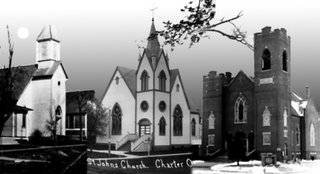
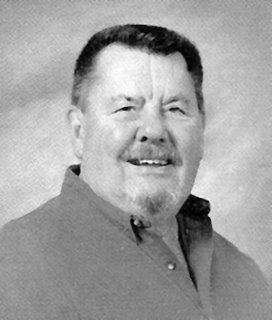 At 9 AM Pastor Paul Schroeder will be available in the sanctuary to reminisce.
At 9 AM Pastor Paul Schroeder will be available in the sanctuary to reminisce.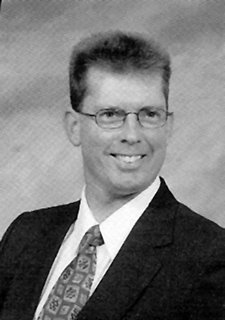 Rev. Douglas Schroeder, Paul’s son and Walter’s grandson, will be guest preacher at the first service, at 10 AM.
Rev. Douglas Schroeder, Paul’s son and Walter’s grandson, will be guest preacher at the first service, at 10 AM. • In 1968, a fact-finding committee was formed to consider plans for a new parsonage or church office. April 1969, plans were approved to build a new church office addition. Ground breaking was in October of 1969 and cornerstone-laying ceremonies were held in July 1970.
• In 1968, a fact-finding committee was formed to consider plans for a new parsonage or church office. April 1969, plans were approved to build a new church office addition. Ground breaking was in October of 1969 and cornerstone-laying ceremonies were held in July 1970.
Dec 23 Debbie Sue Klinker
BAPTISMS CONTINUED...
Dec 25 Jill Marie Butler
1957....page 124
Jan 06 Dean Carl Hollrah
"4There is one body and one Spirit—just as you were called to one hope when you were called— 5one Lord, one faith, one baptism; 6one God and Father of all, who is over all and through all and in all." ~Ephesians 4:4-6
"21and this water symbolizes baptism that now saves you also—not the removal of dirt from the body but the pledge of a good conscience toward God. It saves you by the resurrection of Jesus Christ, 22who has gone into heaven and is at God's right hand—with angels, authorities and powers in submission to him."~1 Peter 3:20-22

1. We sincerely repent of our sins and shortcomings.
2. We trust in Jesus Christ who died that men might live. We are sure that our God is a merciful God as we know Him in Jesus Christ and believe that even now He will forgive our negligence, and avert the looming disaster overshadowing the world.
3. We pray for peace. We ask God to grant harmony to the disunited and oppressed peoples of the earth. We implore Him to make it possible for all nations to solve their differences without armed conflict.
4. We appeal to the leaders of all countries to consider, while there is time, the bitter fruits of war and to weigh every decision with deliberation during these ominous days.
5. We pledge ourselves to stand shoulder to shoulder with our fellow-Americans that the voice of our nation, and if necessary, its arms may be raised for what is right in the sight of God and of the peace of the world.
6. To that end we resolve to dedicate ourselves to earnest, fervent prayer for our country and the peace of the world.

 Anyay, I needed a break really bad, so I thought I'd let you know what people are saying. Mostly negative feedback. It's not that they don't like this site or it's format, they just don't see it's purpose. On the advice of one friend in the communications sphere, I'm cutting the length of a lot of the history postings. There's just so much stuff about finances or personnel changes that I thought I'd streamline it a little. My friend also thought that would be more like giving readers a taste so they'll still want to purchase a copy of the book.
Anyay, I needed a break really bad, so I thought I'd let you know what people are saying. Mostly negative feedback. It's not that they don't like this site or it's format, they just don't see it's purpose. On the advice of one friend in the communications sphere, I'm cutting the length of a lot of the history postings. There's just so much stuff about finances or personnel changes that I thought I'd streamline it a little. My friend also thought that would be more like giving readers a taste so they'll still want to purchase a copy of the book. PASTORS AT ST. JOHN, 2.
PASTORS AT ST. JOHN, 2. • On March 5, 1935, the Young People’s Society became affiliated with the International Walther League.
• On March 5, 1935, the Young People’s Society became affiliated with the International Walther League.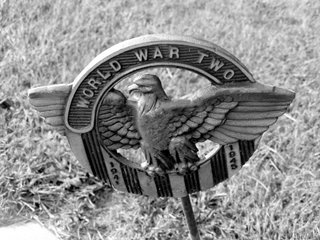 • In 1945, a “Peace Thank-offering” was raised by the congregation for the purpose of sending the saving message of Christ’s Gospel unto many more in this sin-darkened world. WW II had made heavy demands upon us. At one time we had nearly 50 young men in the service of our country. 5 of them gave the supreme sacrifice: Carl Hinrichsen, Vernon Holtorf, Elmer Kuhlmann, Marcus Schmidt and Vernon Schnoor.
• In 1945, a “Peace Thank-offering” was raised by the congregation for the purpose of sending the saving message of Christ’s Gospel unto many more in this sin-darkened world. WW II had made heavy demands upon us. At one time we had nearly 50 young men in the service of our country. 5 of them gave the supreme sacrifice: Carl Hinrichsen, Vernon Holtorf, Elmer Kuhlmann, Marcus Schmidt and Vernon Schnoor.
 St. John's History,
St. John's History,  • During the years 1917-1919 (World War I) St. John was greatly harassed by such people who apparently could not and would not believe --- though ever so much testimony and ever so many proofs were offered ---that German-born people or people of German descent could be loyal citizens of the country they had chosen as their permanent home. It was tried in different ways to cast suspicion of disloyalty upon the congregation, its school and especially its young people’s society and to discountenance their manifestations of loyalty to their country. Motives were judged, injustices perpetrated. Those were troublesome days, since the members of St. John, faithful in their duties over against the government, desired nothing more than to enjoy peace with their fellowman, so desirable especially in times of national unrest.
• During the years 1917-1919 (World War I) St. John was greatly harassed by such people who apparently could not and would not believe --- though ever so much testimony and ever so many proofs were offered ---that German-born people or people of German descent could be loyal citizens of the country they had chosen as their permanent home. It was tried in different ways to cast suspicion of disloyalty upon the congregation, its school and especially its young people’s society and to discountenance their manifestations of loyalty to their country. Motives were judged, injustices perpetrated. Those were troublesome days, since the members of St. John, faithful in their duties over against the government, desired nothing more than to enjoy peace with their fellowman, so desirable especially in times of national unrest.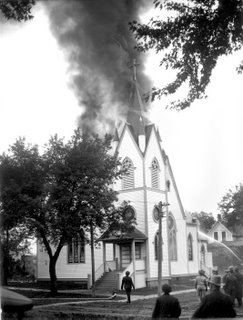 • The year 1924 will never be forgotten by those who were affiliated with St. John. On Sunday, September 28, 1924: The pastor was prepared to deliver his message to the people; the members of the congregation were getting ready to go to church or on their way. At nine o’clock or shortly thereafter the electrifying cry rang out: “The Lutheran Church is afire.” It was! In spite of every effort to subdue the flames, in 2½ hours the beautiful church lay in smoking ruins. It had been remodeled, enlarged, and redecorated, only 2 services had been conducted in it since the improvements had been completed, and now – nothing remained of it but eleven pews and the 3 statues: of Christ and of the 2 angels. (These statues are the same ones that beautify our church today). Rev. Amstein wrote concerning the event: “The entire congregation witnessed the tragic drama unfolding before their eyes. It was as if they came together for the purpose of casting a last lingering look upon their house of worship as one takes a last lingering look at a loved one, then to accompany him to his last resting place here on earth. We were much like the children of Israel, who saw their house of worship destroyed and then, in Babylon, as captives complained: ‘By the rivers of Babylon, there we sat down, yea, we wept, when we remembered Zion. We hung our harps upon the willows in the midst thereof.” The origin of the fire remains a mystery to this day.
• The year 1924 will never be forgotten by those who were affiliated with St. John. On Sunday, September 28, 1924: The pastor was prepared to deliver his message to the people; the members of the congregation were getting ready to go to church or on their way. At nine o’clock or shortly thereafter the electrifying cry rang out: “The Lutheran Church is afire.” It was! In spite of every effort to subdue the flames, in 2½ hours the beautiful church lay in smoking ruins. It had been remodeled, enlarged, and redecorated, only 2 services had been conducted in it since the improvements had been completed, and now – nothing remained of it but eleven pews and the 3 statues: of Christ and of the 2 angels. (These statues are the same ones that beautify our church today). Rev. Amstein wrote concerning the event: “The entire congregation witnessed the tragic drama unfolding before their eyes. It was as if they came together for the purpose of casting a last lingering look upon their house of worship as one takes a last lingering look at a loved one, then to accompany him to his last resting place here on earth. We were much like the children of Israel, who saw their house of worship destroyed and then, in Babylon, as captives complained: ‘By the rivers of Babylon, there we sat down, yea, we wept, when we remembered Zion. We hung our harps upon the willows in the midst thereof.” The origin of the fire remains a mystery to this day. • A new church was soon built. The Ladies Aid also provided the funds to transform the basement into a large hall and kitchen. The corner stone was laid on May 24, 1925, and the church was dedicated on February 7, 1926. The weather on dedication day was ideal but the roads were almost impassable. Yet, the church, comfortably seating 650 people, was filled to capacity. (The placing of chairs and the opening of the windows leading to the rear hall made it possible to accommodate about 1,000). The total cost of the church was $62,000.00.
• A new church was soon built. The Ladies Aid also provided the funds to transform the basement into a large hall and kitchen. The corner stone was laid on May 24, 1925, and the church was dedicated on February 7, 1926. The weather on dedication day was ideal but the roads were almost impassable. Yet, the church, comfortably seating 650 people, was filled to capacity. (The placing of chairs and the opening of the windows leading to the rear hall made it possible to accommodate about 1,000). The total cost of the church was $62,000.00.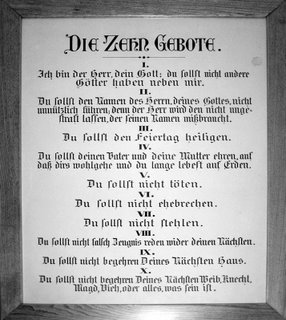
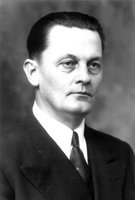 • On July 26, 1934, the congregation extended a call to the Rev. Walter P.A. Schroeder, at the time serving Grace Evangelical Lutheran Congregation of DeWitt, Iowa. After prayerfully considering the importance of the call to St. John, his congregation gave him a peaceful dismissal, which they had been reluctant to do. On September 13, 1934, Rev. Schroeder and his family arrived in Charter Oak. The following Sunday, Rev. Schroeder was installed by Rev. E. Widmann of Ute, Iowa, who had charge of the vacancy. Some 14 pastors took part in the installation service.
• On July 26, 1934, the congregation extended a call to the Rev. Walter P.A. Schroeder, at the time serving Grace Evangelical Lutheran Congregation of DeWitt, Iowa. After prayerfully considering the importance of the call to St. John, his congregation gave him a peaceful dismissal, which they had been reluctant to do. On September 13, 1934, Rev. Schroeder and his family arrived in Charter Oak. The following Sunday, Rev. Schroeder was installed by Rev. E. Widmann of Ute, Iowa, who had charge of the vacancy. Some 14 pastors took part in the installation service.
 HISTORY OF ST. JOHN LUTHERAN CHURCH
HISTORY OF ST. JOHN LUTHERAN CHURCH"The purpose of history is essentially to acquaint us with the heritage of the past, to make us aware of the debt we owe to those who have gone before us, to enable us to profit from the experiences of yesterday."This was the beginning paragraph in the 1941 Sixtieth Anniversary book, and it still applies today.
 In that same decade a number of Lutheran families moved into this territory from Chicago, Illinois. Many of them had emigrated originally from Prussia, Germany. Until 1880 these families had common worship with the original pioneers.
In that same decade a number of Lutheran families moved into this territory from Chicago, Illinois. Many of them had emigrated originally from Prussia, Germany. Until 1880 these families had common worship with the original pioneers.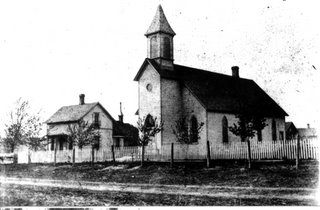 • A church was built in 1888; it was 30 by 50 feet. On October 21, 1888 the 21st Sunday after Trinity, the church was dedicated to the service of the Lord. Rev. W.T. Strobel of Denison conducted the German service in the forenoon, and Rev. M. Herrmann of Grant Township, preached the sermon in the afternoon in the language of the country. Already at this early date the American language was used by St. John Lutheran Church making known the grace of God in Christ Jesus. The church was erected at a total cost of $1,399.00. During this same year the cemetery, one mile north of Charter Oak, was purchased and laid out in lots.
• A church was built in 1888; it was 30 by 50 feet. On October 21, 1888 the 21st Sunday after Trinity, the church was dedicated to the service of the Lord. Rev. W.T. Strobel of Denison conducted the German service in the forenoon, and Rev. M. Herrmann of Grant Township, preached the sermon in the afternoon in the language of the country. Already at this early date the American language was used by St. John Lutheran Church making known the grace of God in Christ Jesus. The church was erected at a total cost of $1,399.00. During this same year the cemetery, one mile north of Charter Oak, was purchased and laid out in lots.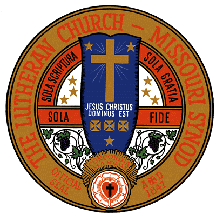 • In 1891 the first parsonage was built and then was enlarged in 1896.
• In 1891 the first parsonage was built and then was enlarged in 1896.